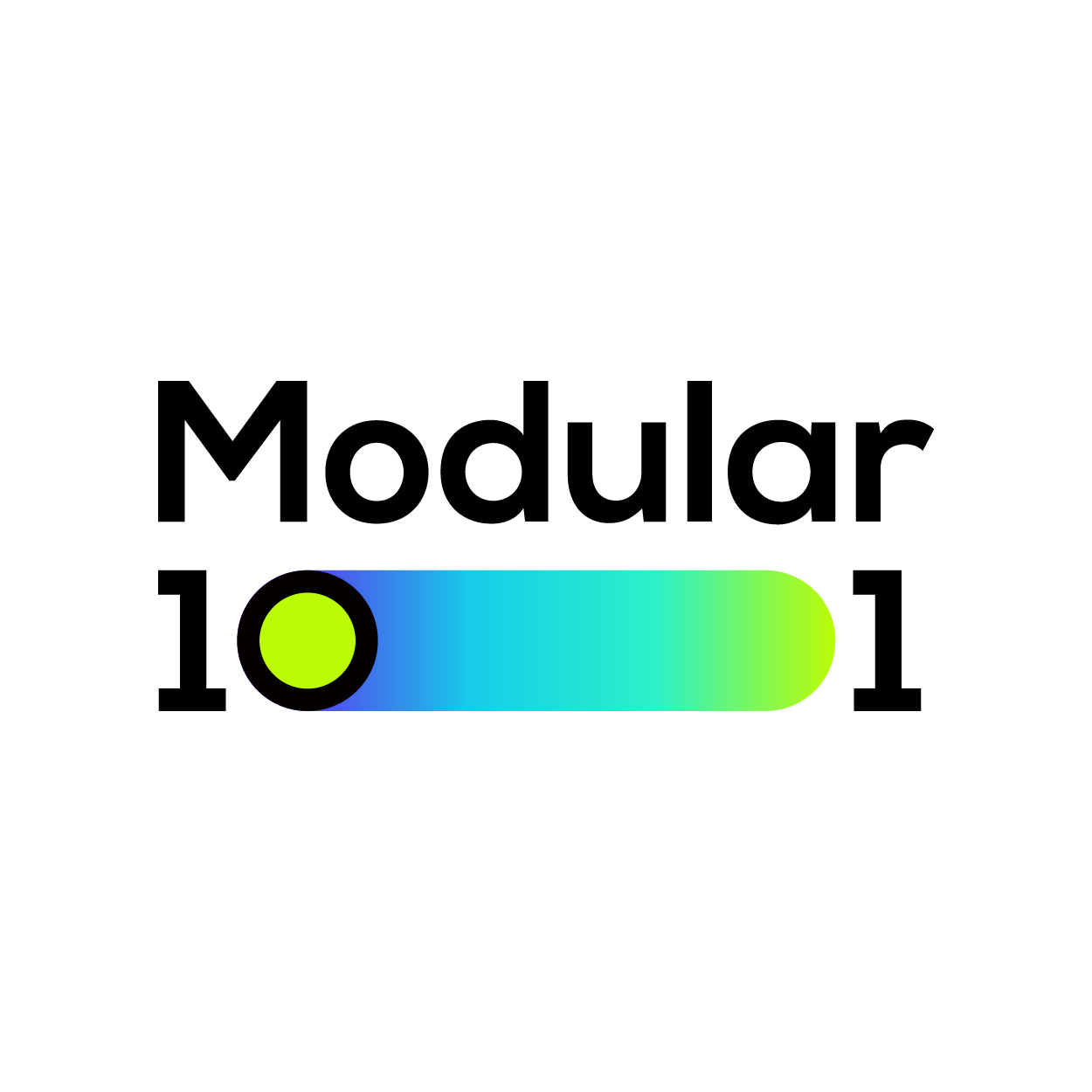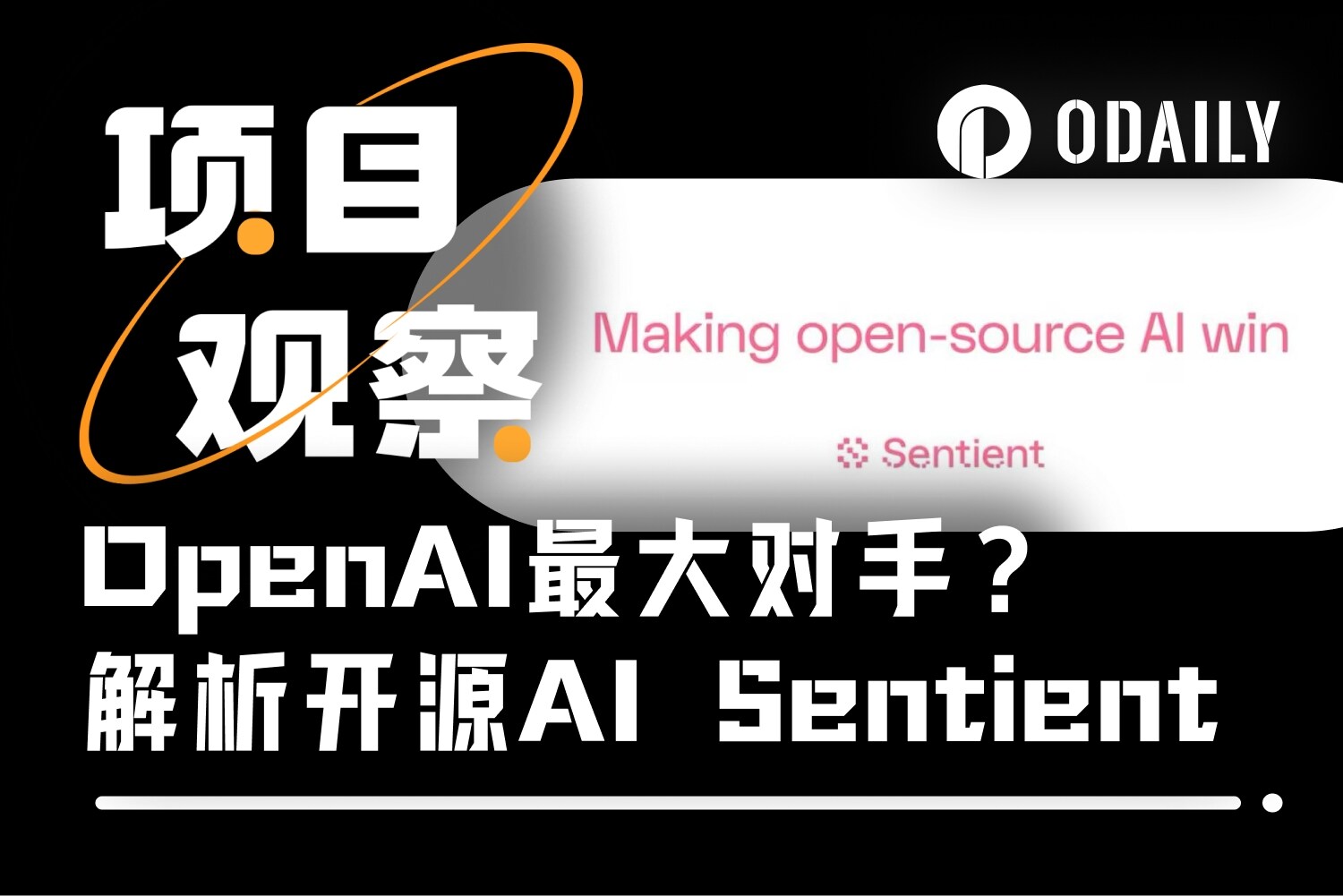7 misconceptions and truths about modular blockchain
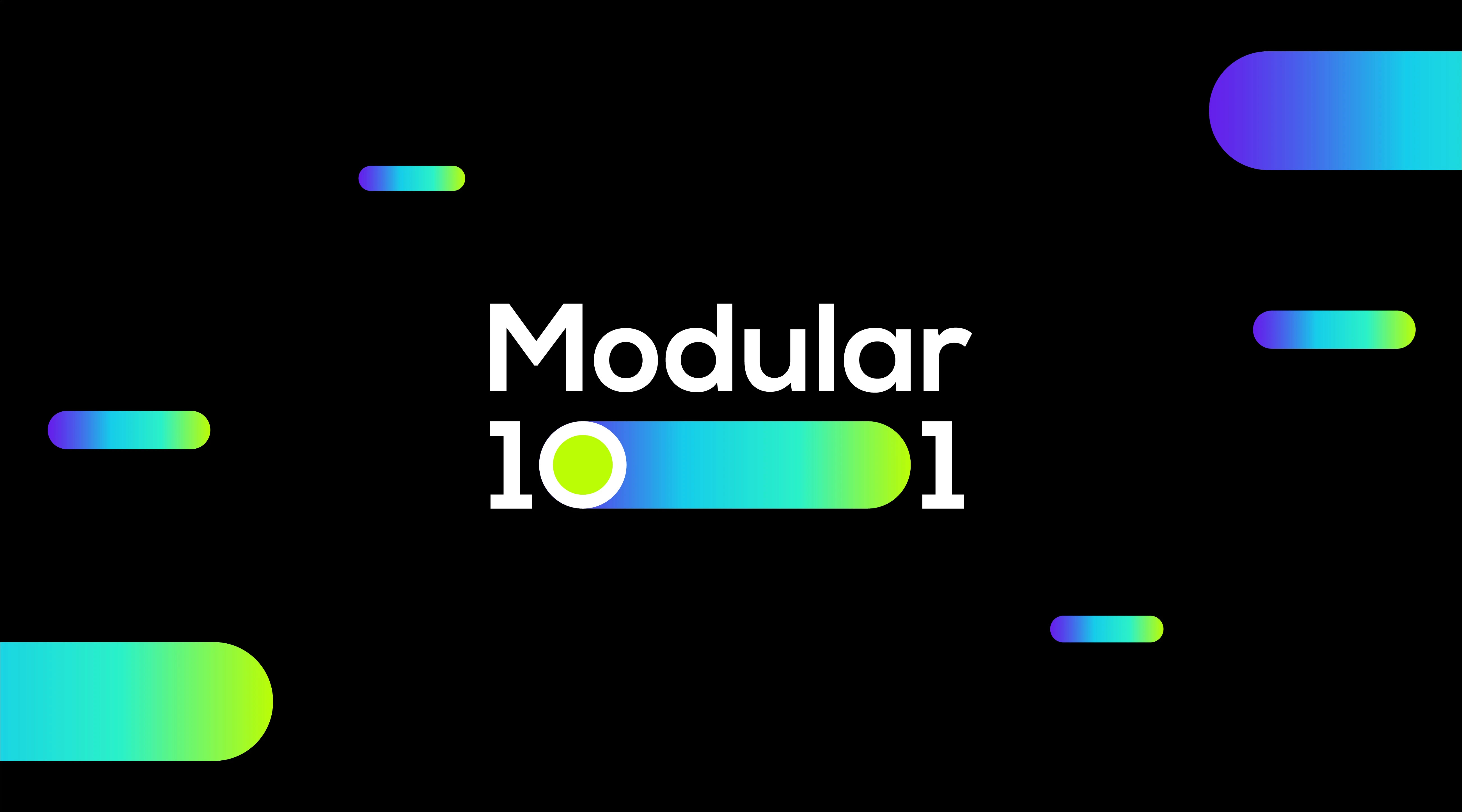
The blockchain ecosystem is complex and continuously evolving, and there have been a lot of great advances in scalability recently. To keep this progress going, sometimes some misconceptions about modular blockchains need to be clarified.
Modular blockchain brings a series of key benefits to the entire ecosystem, including reduced developer complexity, improved scalability and performance, better adaptability, and financial efficiency. They are specifically designed so that the individual components work together seamlessly to form a highly integrated system.
So, let’s dig a little deeper.
Myth 1: Modular systems increase complexity for developers
The first misconception is that modular blockchains may increase complexity for application developers due to multiple components working together.
Fact: Modular systems reduce complexity and in turn provide key advantages to developers
In fact, in a modular system, developers building smart contracts on universal L2 have exactly the same experience as developers building smart contracts on a single chain. Once a smart contract is deployed on an EVM L2 chain, users simply send their transactions to the blockchain as if the contract was deployed on a single chain. Any added complexity is handled by the rollup/chain developers, not the application developers - and this brings multiple advantages to the application developers, including flexibility, cost reduction, etc.
What if the project is deployed as an application-specific rollup, rather than on a general rollup?
The modular ecosystem can provide some preset chain templates, and Rollup developers do not need to care about or solve the underlying complex technical issues during the development process, because these issues have been simplified or solved in the templates. This helps developers perform development work more efficiently. For example, if you want to deploy an application rollup today, you can go to a Rollup-as-a-service (RaaS) provider (such as Caldera, Altlayer, Opside, Snapchain) to start a rollup with one click.
RaaS providers solve the complexity and offer it as a service just like hosting a virtual machine on DigitalOcean or deploying a web app on Heroku. Advanced users can manage and configure this complex orchestration process themselves, allowing greater flexibility to meet specific needs. However, the price of this flexibility is that it requires more effort and time to set up and maintain the system.
Lets look at a comparison between a single chain and a modular chain where a project decides to deploy its own chain:
Single chain: If a project is deployed as an appchain in the Cosmos sense, the (social and technical) complexity for application developers can be high even if the DA and execution are within the same system. Developers must start their own validator network, and interacting with other chains requires trusting those chains validator networks.
Modular chain: If the project is deployed as an application-specific rollup on another underlying DA layer (such as Avail, Ethereum or Celestia), developers do not need to worry about launching a validator network and can only focus on building the application. These rollups can still inherit the security of the underlying base layer, in a way similar to traditional software developers who focus on building applications without worrying about the underlying infrastructure.
Application developers on the module blockchain will also have easy access to CEX. The rollup ecosystem on every major Layer 1 blockchain (such as Avail) will have at least 1 rollup focused on liquidity. This rollup will have the following characteristics:
Powerful CEX connection
Legal currency entry and exit channels
Bridge to major settlement layers
DEX with deep liquidity
This liquidity-focused rollup (or Liquidity Hub) will be seamlessly accessible from other rollups via a cheap and fast cross-rollup messaging mechanism. A Rollup ecosystem built on a shared DA layer will focus on seamless interoperability between rollups since they do not need to cross trust zones.
Osmosis in the Cosmos ecosystem and AssetHub in the Polkadot ecosystem are excellent early examples of this model. Strictly speaking, these are not rollups, but you can see that many ecosystems are approaching this general ecosystem design pattern!
Myth 2: Modular chains reduce performance
There is also a misconception that breaking a single blockchain functionality into modular and distinct layers will reduce performance, or at least not improve it.
Fact: Modular blockchains can improve performance because each component can be optimized individually
We now live in a post-ZK (zero-knowledge proof) world where previous common assumptions about scalability and security no longer apply. Today, performing verification no longer requires all nodes in the network to re-execute all transactions. In contrast, trustless zero-knowledge (ZK) provers can provide validity proofs that are much cheaper to verify. Moreover, the validity prover is extremely parallelizable.
With Data Availability Sampling (DAS, implemented on Avail and Celestia), you dont need to download all transaction data to verify data availability (DA). DAS light nodes can randomly sample a small part of the entire data and obtain high-probability DA guarantees very quickly.
This is much faster and cheaper than having every node in the network download all the data.
The combination of DAS and recursive validity proofs makes modular blockchains extremely powerful. Any Rollup developer can build a brand new chain, even using a centralized sequencer, and users can still ensure the safety of their funds, provided that the Rollup protocol has built-in Escape Hatches and Based Sequencing. options.
Escape Hatches: This is a security mechanism usually used in smart contracts or other blockchain applications. They allow users to safely withdraw or transfer their funds under certain conditions, such as a malfunction or attack on the contract. This is an emergency response to protect user assets and system integrity.
Based Sequencing: refers to a sequential arrangement of tasks or operations that is based on certain rules or conditions.
These two are usually used to improve the reliability of the system and the security of user assets.
Some other benefits you can receive include:
This system is more scalable because even light nodes receive strong security guarantees.
The EVM (Ethereum Virtual Machine) execution environment may not be suitable for every application. In this case, the application can tailor the execution environment to suit its needs by deploying additional VMs, such as SVMs (or using no VM at all).
Modularity has nothing to do with execution speed. The performance of Solana VM on Rollup is the same as on a single blockchain. The real benefit of modularity is in optimizing verification workflows. And it doesnt even need to have zk and proof of validity. Optimistic or pessimistic Rollups also exhibit the same characteristics.
Modular blockchains are more than the sum of their parts.
Myth 3. Modular blockchain will increase costs
People may worry about increased costs when using modular blockchains, but in reality, the opposite is true. A single chain has hidden costs, and in a multi-chain world, users need to pay on all chains.
Fact: By sharing a base layer, modular chains eliminate the cost of maintaining security across multiple chains
Let’s look at some data on the real costs of operating various blockchain networks. The following data comes fromhttps://www.stakingrewards.com/。
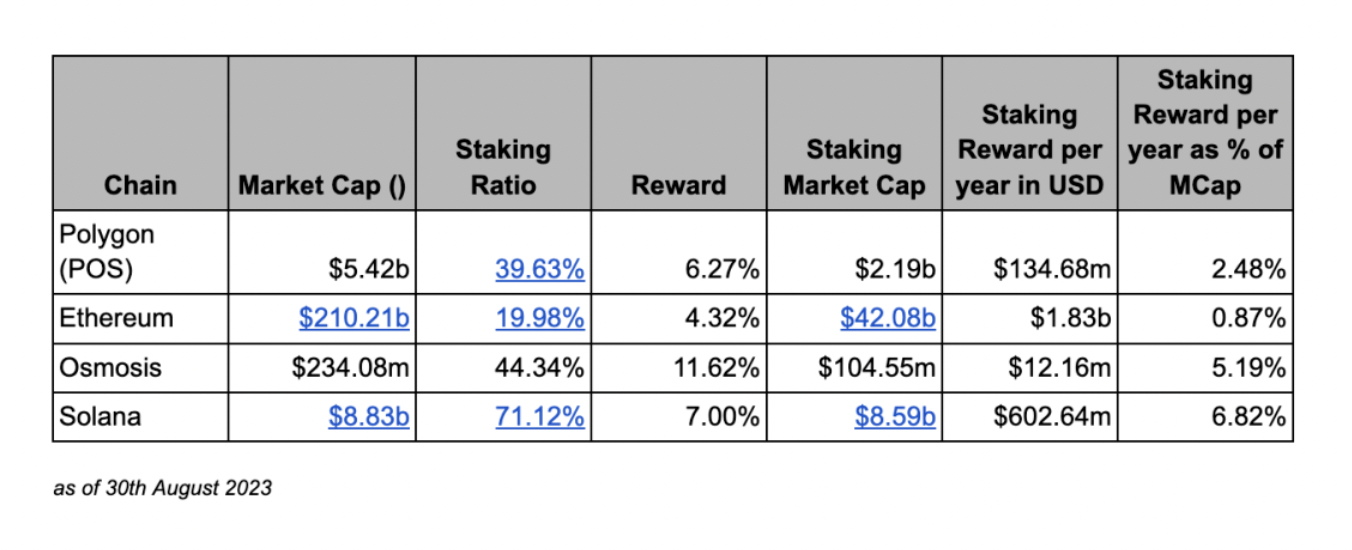
Focus on the rightmost column of the table above. Obviously, the cost of launching and maintaining a blockchain is very high!
Note that the inflationary rewards paid to the stakers running the network are ultimately paid out of the pockets of token holders. In the absence of real transaction fees, token holders subsidize the cost of running the network.
When someone wants more flexibility from the protocol rules of a single blockchain and wants to introduce a new execution environment or precompiled functionality, those supporting the single blockchain structure need to create a new one from scratch. Blockchain. This typically involves building a validator network from scratch and issuing a new token. Such a design limits permissionless innovation!
When a rollup is deployed on the same DA layer, it is part of the SAME ledger of the base layer asset. In fact, the so-called L2 ledger is only a subset of the data entries in the L1 ledger. As Jon explains in this post, There are millions of rollups in each DA layer. Simply put, a rollup is just any subset of the base DA layer.
There are countless undiscovered rollups in Ethereums data. You can create a rollup that trustfully reads and computes that data, and then you can provably pass it back. - Jon Charbonneau
Yes, there are entities that focus on maintaining their own L2 ledgers, but all of these ledgers are ultimately just a subset of the base layer ledger. This is why L2 inherits the security guarantees from the DA layer they are deployed on.
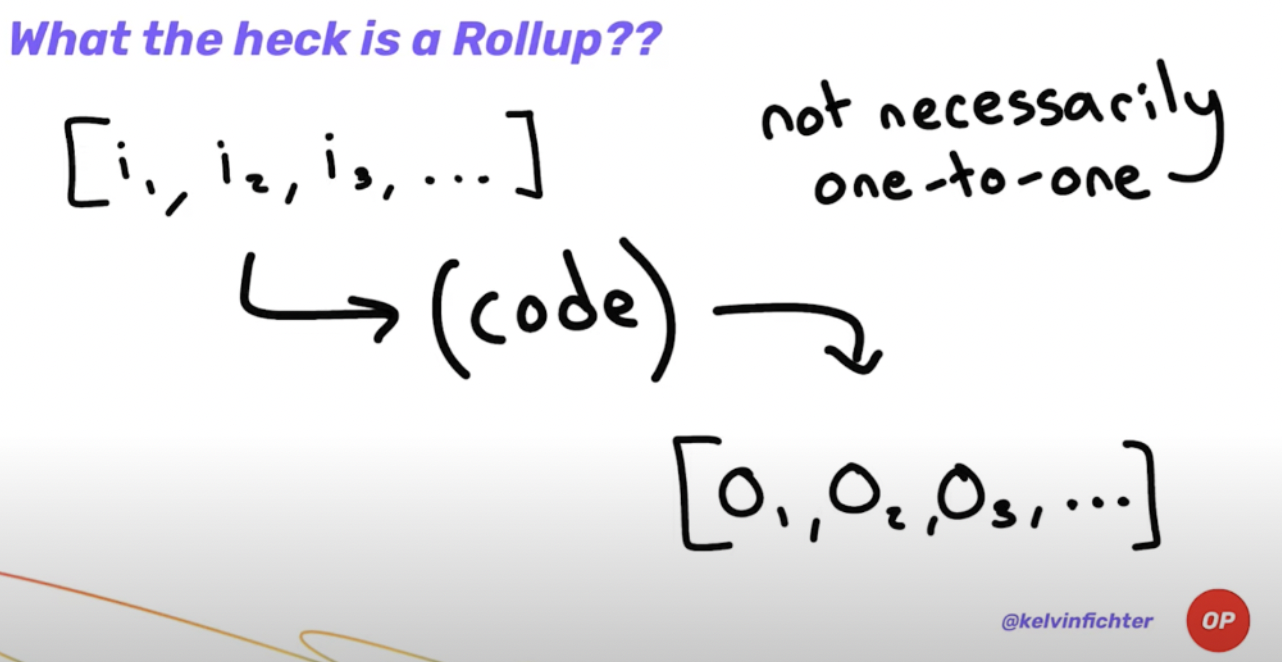
On top of a shared Data Availability (DA) layer, token holders of the base layer are responsible for initiating and maintaining security. Rollup ecosystems built on top of it do not need to manage this aspect separately, as they inherit the security features of the base layer.
One argument made is that modular blockchains would result in less liquidity per ledger, which is problematic because it assumes modular blockchains are not vertically integrated. This argument puts too much emphasis on synchronous compositionality, when in fact most functionality can be achieved with asynchronous compositionality. Even the best traditional fintech systems prioritize asynchronous composability. This is why the Cosmos chain can access liquidity pools in Osmosis through IBC (inter-chain communication), and why Ethereum L2 Rollups can access liquidity on Ethereum through trust-minimized bridges.
As modular systems mature, asynchronous message passing via recursive proof aggregation will become extremely cheap, as client-side validity proof verification can be achieved through a combination of executing validators and efficient DA verification (via light clients) accomplish.
If multiple arbitrage trades on different rollups are a problem, they are not limited to modular blockchains. Even in multiple DeFi protocols at the same layer, double counting across asset ledgers can occur. For example, if the ETH-USDC price is $1,800 on Binance, $1,600 on Aave, and $1,700 on Compound, this would require two separate arbitrage transactions to resolve the issue.
Multiple arbitrage trading is not an exclusive feature or result of modular blockchains.
Misconception 4: Applying Rollup does not contribute anything to developers’ experimentation or monetization
Theres also a misconception that using Rollup doesnt offer developers any new avenues for experimentation or monetization. It is believed that a single-structured blockchain already provides enough tools to experiment or generate revenue.
Fact: Modular Rollups allow for more flexible experimentation, including creative monetization opportunities and more
Modular Rollup gives developers the ability to work in multiple execution environments, which not only promotes diversity but also presents cost-saving advantages. Application-specific Rollups tend to be more cost-effective and efficient than high-overhead monolithic blockchains, eliminating complexities like managing infrastructure and indexers.
Obviously, if the application is deployed as an application-specific rollup, the application can capture MEV (both within the rollup and across chains). There is a misconception that the same effect can be achieved by adding some logic changes when deploying a smart contract on a global single state machine.
Deploying a smart contract on a global single state machine and making some logic changes may achieve similar results. However, sticking to a global state model and single VM execution doesnt make much sense when applying Rollup offers the potential for so many arbitrary execution environments. As mentioned above, some applications may be better suited to a completely different execution environment than a standard EVM or SVM. This is possible in modular blockchains, and we believe more experimentation with execution environments, ledger authentication, access, custom state models, etc. is needed to move the industry forward.
Looking at the analogy of a traditional technology stack, there is no single programming language or one standard way of developing web/mobile applications. Why should blockchain be different? Modular Rollup can achieve variety of choices and promote experimentation in any industry, thereby unlocking new monetization opportunities!
In addition to the revenue opportunities, the cost of deploying and maintaining an application on a monolithic blockchain is likely to be much higher than just deploying an application-specific rollup. Most application developers working on a monolithic blockchain need to manage a large amount of infrastructure, indexers, transaction relay providers, RPC full node providers, etc.
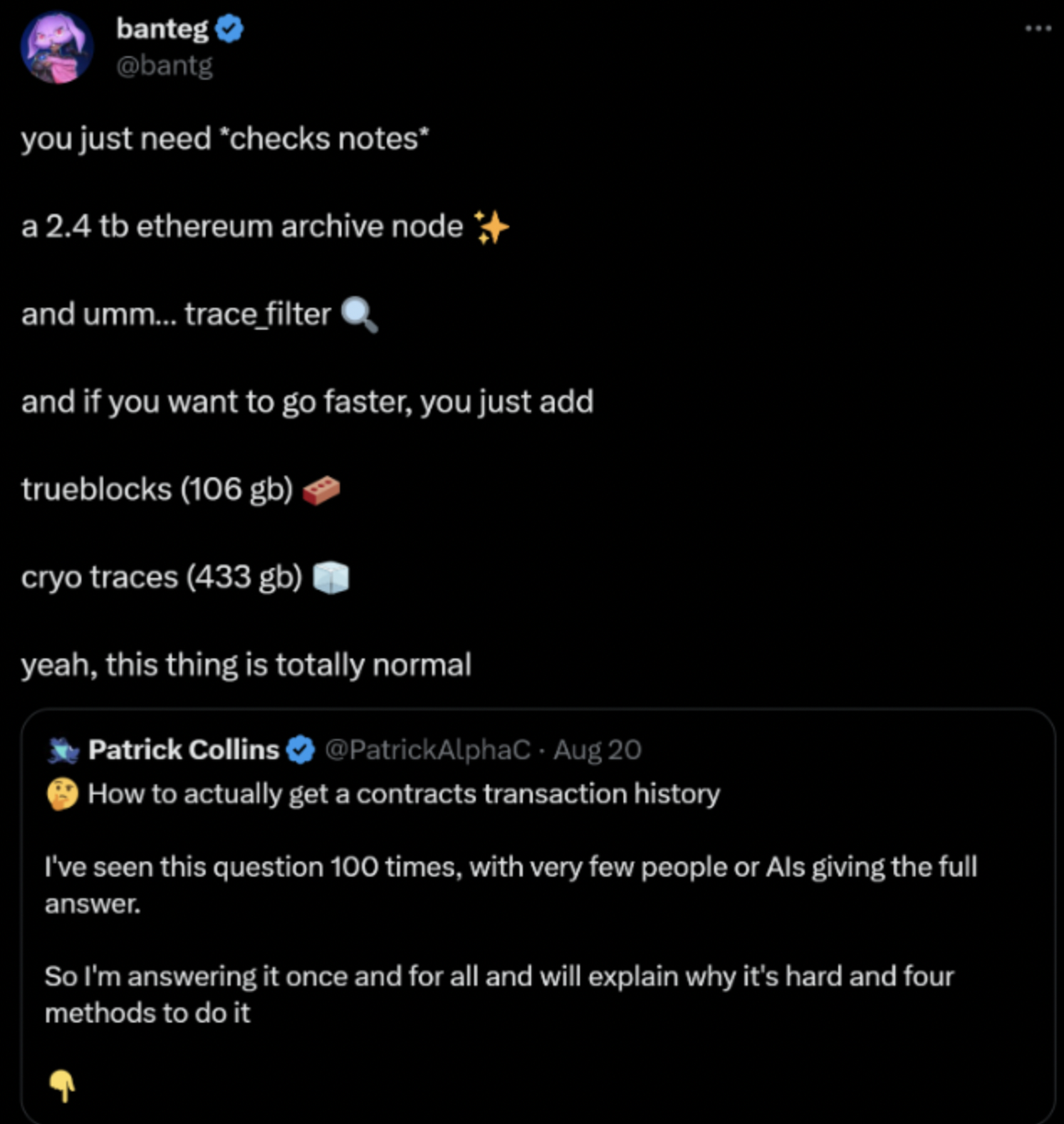
A modular structure is able to abstract this complexity by allowing dedicated chains with the right constructs (application specific, custom state transition functions, custom states) to bypass these infrastructure management requirements, which is often better than doing it on its own in a single Its cheaper to try to bootstrap everything on a structural chain.
Ignoring all these benefits, do we really want to restrict developers from maintaining the status quo?
Myth 5: Modular blockchain cannot solve cross-application congestion issues
The misconception is that a single fabric chain is structurally sufficient to address cross-application congestion without splitting into application-specific rollups.
Fact: New paradigm in modular chains allows for more efficient fee mechanisms
In effect, pricing every resource using the same global fee market limits the throughput of the entire system. While local fee markets like Solana and Aptos effectively alleviate application-level congestion, they are less than satisfactory in solving cross-application congestion.
This is exactly the problem that developers of modular systems are trying to solve. By deploying applications as application-specific rollups, projects gain access to dedicated execution environments and application-specific fee markets.
What happens when the base layer experiences price and congestion spikes (either directly or indirectly through other L2s)?
Even in the event of congestion or latency in the base layer, application-specific rollups can still continue to function normally, and users transactions can still obtain a certain degree of finality (soft finality), although they have not yet been permanently and irreversibly recorded on the main chain (hard finality). This provides users with a level of flexibility and security.
Rollup on a scalable data availability-centric base layer like Avail alleviates this to a large extent by being able to scale the DA block size based on rollup demand.
In a rollup ecosystem that supports asynchronous messaging through recursive proof aggregation, each application can have its own throughput and transaction pricing. They can run at their own pace without having to worry about other chains they need to interact with. Asynchronous messaging enables verifiable inclusion without synchronization assumptions, thus providing users with greater flexibility to avoid shared state access compared to monolithic chaining.
The asynchronous paradigm enabled by proof aggregation enables you to place transactions across chains at different points in time to avoid congestion on a single chain without sacrificing atomicity or composability between applications. This provides a richer set of tools for expressing intentions that are greatly limited in synchronized composability between applications on a single structural chain.
Myth 6: Modularity lacks vertical integration and inhibits innovation
Some people misunderstand that modularity means no vertical integration. Others believe that the flexibility offered by modular chains is overrated and that nothing new needs to be built.
Fact: Modular systems allow for creative building of future use cases
In fact, modular systems can be combined to form vertically integrated technology stacks whose complexity can be abstracted away from application developers.
The premise of permissionless innovation is to allow app developers to experiment and come up with new ideas while still absorbing high security from the technology stack on which their apps are deployed. This permissionless feature may be limited if the application is deployed on L1 which is expensive to upgrade.
Modular systems reduce the cost of experimenting with new execution environments, new state models, and new access mechanisms. They offer lower fees and lower latency. Access to instant DEX, stablecoins, and fiat entry and exit is easily achieved through one or more liquidity-focused rollups or the previously mentioned liquidity hubs.
Without experimentation, it is impossible to predict the use cases that will emerge from a correctly implemented modular technology stack. When the Internet came along, Bill Gates best guess at a use case was watching tapes of baseball games. This just goes to show how difficult it is to predict where a technology will go if no one is allowed to innovate on it without permission.
Myth 7: Rollups cannot be hard forked like L1 chains
There is also a common misconception that Rollups cannot be hard forked. They are tied to a fixed bridge on the base layer, and a hard fork means the base layer itself must be forked.
Fact: Sovereign Rollups on modular chains allow for seamless hard forks without relying on the base layer
This misunderstanding stems from how Rollups are implemented on Ethereum, which combine a bridge to the base layer and a state verification mechanism. We should not confuse bridges and authentication mechanisms.
Rollup itself is of course capable of hard forks, much in the same way as L1 forks. The bridge itself is a separate structure. Jon Charbonneau explains well in this article why Rollups are not equal to Bridges (https://dba.mirror.xyz/ hyRKK 4 _PDrO 2 FKpF 6 eIRvnq 8 sA_Mx 7 dXtQf_MWzSWTU ?ref=blog.availproject.org). Rollup is not defined by a bridge, so the hard fork capability of a bridge on some other chain should not be equated to the hard fork capability of Rollup itself.
A sovereign rollup on Avail can be considered similar to any ordinary blockchain. Rollups full node is synchronized with the Rollup node. The difference is that Rollup transaction data is also sent to Avail, and DA (data availability) light nodes on Avail can then randomly sample this data and verify data availability. These light clients are also embedded in the Rollup nodes to facilitate this process. Compared to Ethereum-style or fixed settlement layer type Rollups, the main difference in this construction is that Rollup nodes and light clients verify the canonical chain without relying on fixed verification mechanisms based on smart contracts.
If people are still not convinced by the theoretical discussion on this topic, they can refer to our OpEVM prototype. This prototype is a sovereign optimistic chain built on Avail, with a decentralized sequencer set and a permissionless watchtower. It can be hard forked easily without any changes on Avail. It is worth noting that Avail does not support any smart contracts, so Rollup does not have a fixed bridge, which gives it sovereignty.
OpEVM prototype: https://github.com/availproject/op-evm/?ref=blog.availproject.org
Summarize
Currently, blockchain remains a niche industry. We need more users, wider adoption, and more use cases than is possible today.
To achieve this goal, we need to reduce the cost of experimentation and allow users and developers to make informed choices between a single or modular ecosystem. We hope that through this article you will learn more about the scalability potential of modular systems and be better equipped to make such a choice when the need arises. With the right tools, we believe you can create innovations beyond our imagination.
Let thousands of rollups prosper!
Original text: https://blog.availproject.org/7-myths-about-modular-blockchains/
Compilation: Modular 101
read more:
Comprehensive comparison of the four major DA layers: Avail, Celestia, Ethereum, and EigenDA!
Avails vision: Become the default DA layer for Ethereum rollup!
How modular blockchain creates richness and solves the scarcity problem of single chains

